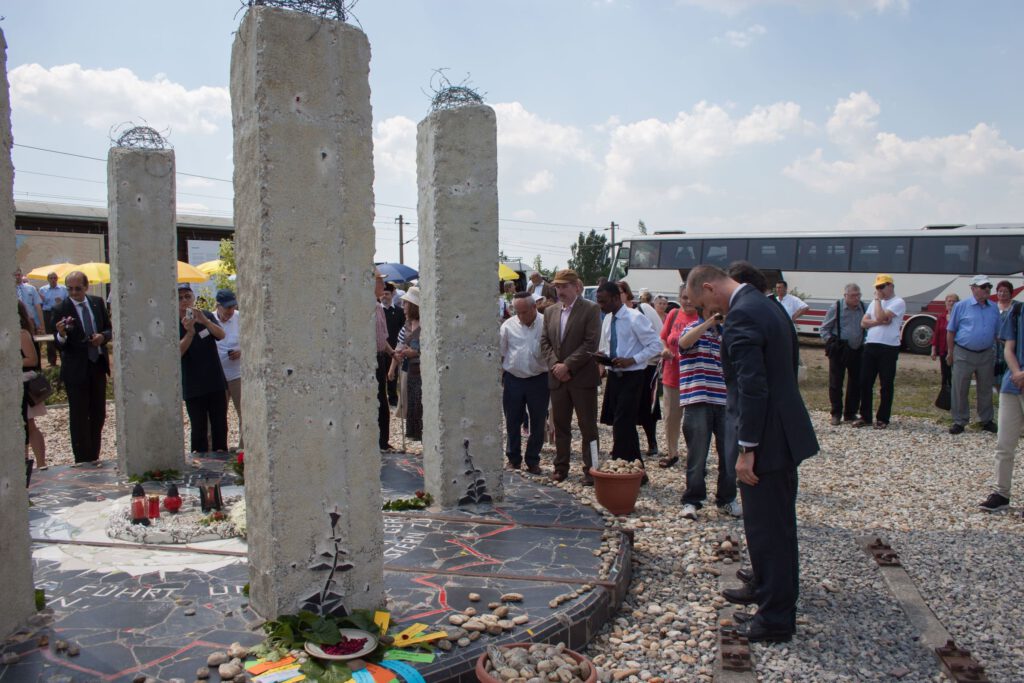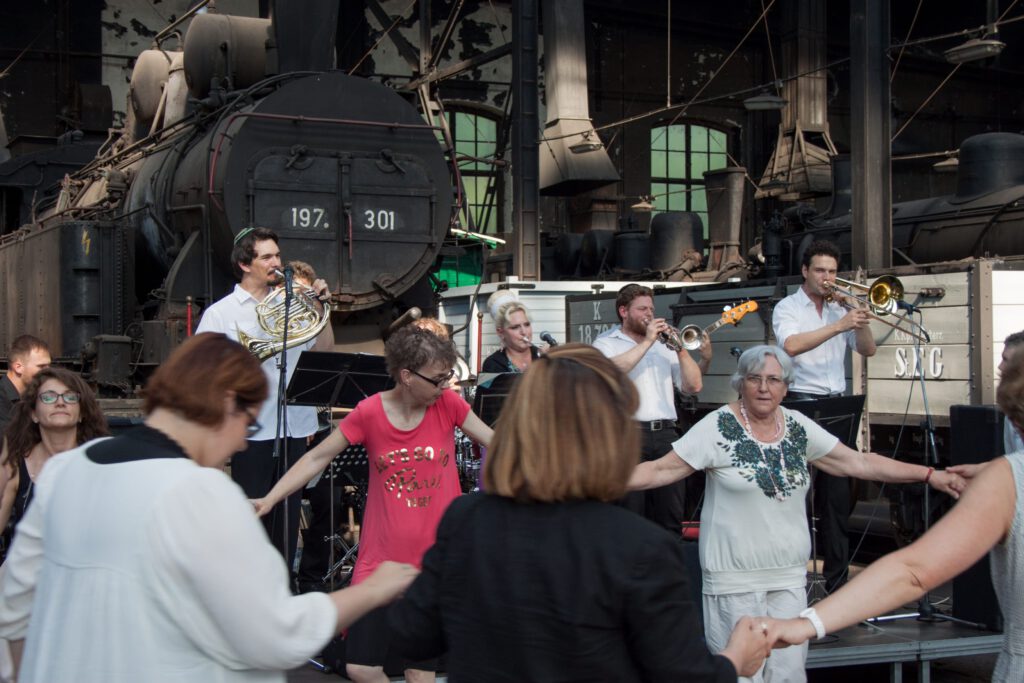The memorial is a place of commemoration for the victims of the Strasshof transit camp. At the local cemetery alone, there are roughly 500 people buried who died in this camp. The task force Verein Arbeitsgruppe Strasshof (VAS) commissioned the artist Karl Heinz Schreiner to design the memorial, the seven columns of which symbolize the seven labor camps that were located in Strasshof. Since 2015, a part of the permanent exhibition in the Kulturhaus Strasshof also provides information about the history of forced labor in the town.
The largest camp in Strasshof was the transit camp for foreign forced laborers, built in 1942 by the Labor Deployment Administration. Tens of thousands of people from all over Europe were deported here. In the summer of 1944, roughly 15,000 Jewish men, women, and children were deported from Hungary to Strasshof. According to an agreement between Eichmann and the Jewish Rescue Committee in Budapest, they were allowed to remain together as families and were exploited as civilian forced laborers in eastern Austria. The employers also had to take in those who were unfit for work. For Jewish children in particular, Strasshof therefore became a means of survival.
Image caption: Since 2012, regular commemoration events have been held together with camp survivors and their descendants from Hungary. For the VAS, the most important thing is the encounter with these people, for example at the “Celebration of Survival” in 2015.


